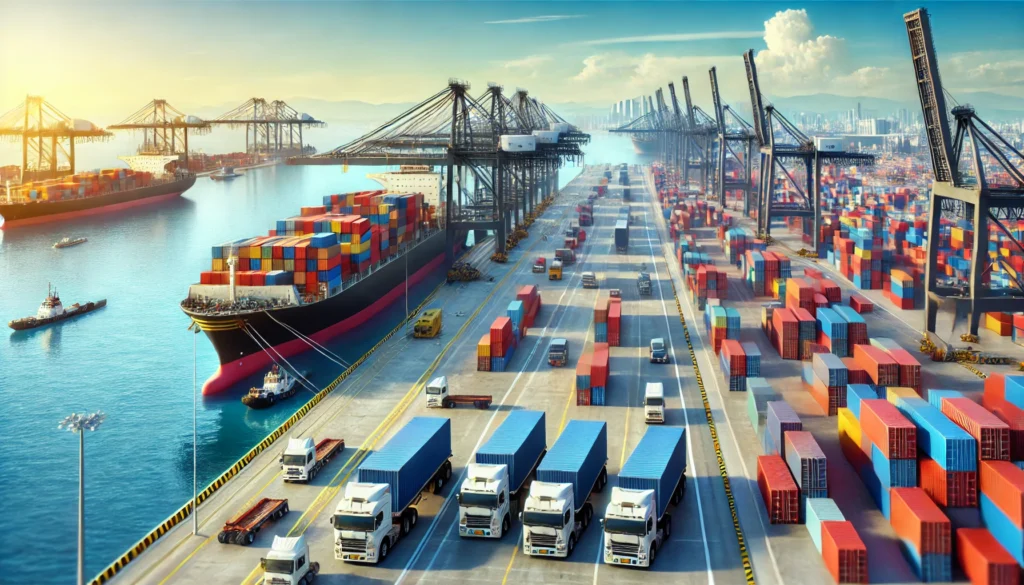Table of Contents
ToggleMastering the Customs Clearance Process for Export and Import: A Step-by-Step Guide
Introduction
Customs clearance is a crucial step in the export and import process, serving as the gateway to international trade. It involves complying with the legal and regulatory requirements of both the exporting and importing countries. The customs clearance process ensures that goods entering or leaving a country adhere to the applicable rules, taxes, and safety regulations.
Understanding the customs clearance process for export and import is essential for businesses to avoid unnecessary delays, penalties, and legal complications. This article provides a comprehensive step-by-step guide to the customs clearance process, including documentation requirements, regulatory compliance, and best practices to streamline the process.
Importance of Customs Clearance
Customs clearance is not just a legal formality—it is a critical process that affects the overall efficiency of international trade. Proper customs clearance ensures:
Smooth movement of goods across borders
Compliance with international trade laws
Payment of appropriate customs duties and taxes
Prevention of illegal trade and smuggling
Protection of intellectual property rights
Failure to comply with customs regulations can result in shipment delays, confiscation of goods, or financial penalties.
Customs Clearance Process for Export
Export customs clearance involves obtaining permission from the customs authorities to ship goods out of the country. The following steps outline the standard process for export customs clearance.

1. Preparation of Export Documentation
Proper documentation is the foundation of the customs clearance process. The essential documents required for export customs clearance include:
Commercial Invoice
Packing List
Bill of Lading or Airway Bill
Export License (if applicable)
Certificate of Origin
Shipping Bill
Insurance Certificate
Letter of Credit (if applicable)
2. Registration with Export Promotion Councils
In many countries, exporters must register with relevant export promotion councils to avail of government benefits and schemes. For example, exporters in India must obtain a Registration-cum-Membership Certificate (RCMC) from the appropriate export promotion council.
3. Submission of Shipping Bill
The Shipping Bill is the primary document required for export customs clearance. It contains details about the goods, their value, destination, and exporter’s information.
Types of Shipping Bills include:
Free Shipping Bill (for duty-free goods)
Dutiable Shipping Bill (for goods on which export duty is applicable)
Drawback Shipping Bill (for goods eligible for duty drawback)
4. Customs Examination
Customs authorities may physically inspect the goods to verify their description, quantity, and quality against the submitted documents. This process ensures that the goods meet the specified standards and regulations.
5. Payment of Export Duty (If Applicable)
Certain products, such as minerals or agricultural commodities, may be subject to export duties. The exporter must calculate and pay the applicable export duties before proceeding with customs clearance.
6. Customs Clearance and Let Export Order (LEO)
Once the customs authorities are satisfied with the documents and examination, they issue a Let Export Order (LEO), permitting the shipment to proceed. The shipping bill is then stamped, and the goods are cleared for export.
7. Collection of Bill of Lading or Airway Bill
After customs clearance, the shipping carrier issues the Bill of Lading (for sea shipments) or Airway Bill (for air shipments), which acts as proof of shipment.
Customs Clearance Process for Import
Import customs clearance involves obtaining permission to bring goods into the country. The process typically includes the following steps:
1. Import Documentation Preparation
Importers must prepare and submit the following documents:
Commercial Invoice
Packing List
Bill of Lading or Airway Bill
Import License (if required)
Certificate of Origin
Insurance Certificate
Purchase Order or Letter of Credit
2. Filing Bill of Entry
The Bill of Entry is a legal document submitted to customs authorities to declare the imported goods. It includes information about the importer, description of goods, value, and applicable duties.
Types of Bills of Entry include:
Bill of Entry for Home Consumption (for goods meant for domestic use)
Bill of Entry for Warehousing (for goods to be stored in bonded warehouses)
Bill of Entry for Ex-Bond (for goods removed from bonded warehouses)
3. Customs Duty Calculation and Payment
Importers must calculate and pay the applicable customs duties based on the assessed value of the goods. The customs duty typically includes:
Basic Customs Duty (BCD)
Integrated Goods and Services Tax (IGST)
Countervailing Duty (CVD)
Anti-Dumping Duty (if applicable)
4. Customs Examination and Assessment
Customs authorities may physically inspect the goods to verify their conformity with the submitted documents. The assessment also involves verifying the declared value, classification, and duty payment.
5. Clearance and Release of Goods
Once the customs authorities are satisfied, they issue the Out of Charge Order, allowing the importer to take delivery of the goods.
6. Delivery of Goods
After obtaining customs clearance, the goods are handed over to the importer, who arranges for their transportation to the final destination.
Common Challenges in Customs Clearance
Despite its importance, the customs clearance process can be complex and time-consuming. Common challenges include:
Incomplete or incorrect documentation
Customs duty disputes
Delays in physical inspection
Regulatory changes
Lack of awareness of trade regulations
Best Practices for Smooth Customs Clearance
To ensure a smooth customs clearance process, businesses should adopt the following best practices:
Maintain accurate and complete documentation
Use professional customs brokers
Stay updated on customs regulations
Plan shipments in advance
Establish good communication with logistics partners
Role of Customs Brokers in Customs Clearance
Customs brokers play a vital role in facilitating the customs clearance process. They act as intermediaries between businesses and customs authorities, helping to:
Prepare and submit documents
Calculate customs duties
Liaise with customs authorities
Resolve disputes
Expedite the clearance process
Conclusion
The customs clearance process is a critical aspect of international trade that requires careful attention to documentation, regulations, and compliance. By understanding the intricacies of the customs clearance process for both export and import, businesses can minimize delays, reduce costs, and enhance their global trade operations.
Engaging experienced customs brokers, staying updated on regulatory changes, and adopting best practices can significantly improve the efficiency of customs clearance. With proper planning and compliance, businesses can successfully navigate the complexities of international trade and unlock new market opportunities.
